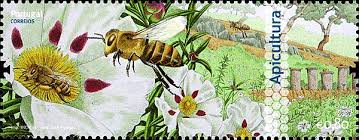This article presents results of an analysis of honey bee losses over the winter of 2011-2012 in the Netherlands, from a sample of 86 colonies, located at 43 apiaries. The apiaries were selected using spatially stratified random sampling. Colony winter loss data were collected and related to various measures of colony strength recorded in summer, as well as data from laboratory analysis of sample material taken from two selected colonies in each of the 43 apiaries. The logistic regression model which best explained the risk of winter loss included, in order of statistical importance, the variables (1) Varroa destructor mite infestation rate in October 2011, (2) presence of the cyano-substituted neonicotinoids acetamiprid or thiacloprid in the first 2 weeks of August 2011 in at least one of the honey bee matrices honey, bees or bee bread (pollen), (3) presence of Brassica napus (oilseed rape) or Sinapis arvensis (wild mustard) pollen in bee bread in early August 2011, and (4) a measure of the unexplained winter losses for the postal code area where the colonies were located, obtained from a different dataset. We consider in the discussion that reduced opportunities for foraging in July and August because of bad weather may have added substantially to the adverse effects of acetamiprid and thiacloprid.
Source: van der Zee R, Gray A, Pisa L, de Rijk T (2015) An Observational Study of Honey Bee Colony Winter Losses and Their Association with Varroa destructor, Neonicotinoids and Other Risk Factors. PLoS ONE 10(7): e0131611. doi:10.1371/journal.pone.0131611
http://journals.plos.org/plosone/article?id=10.1371/journal.pone.0131611

- Login om te reageren
